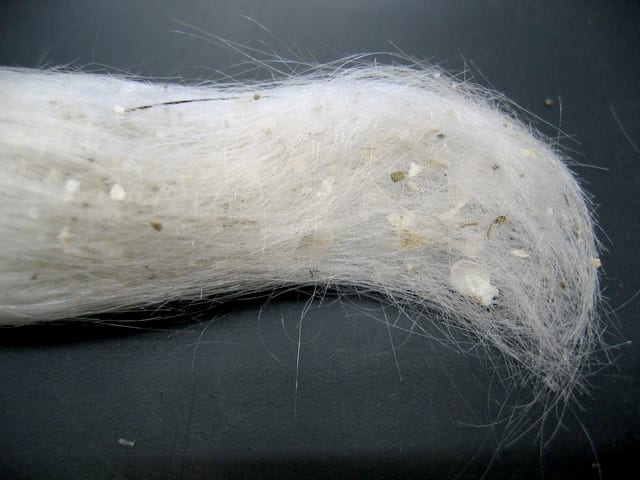Glass cables that anchor sponges strengthened by concentric layering
Sponges are some of the simplest animals. They have no internal organs and collect all their food and oxygen by filtering it from water. Like most sponges Euplectella aspergillum, or Venus’ flower basket, works like a chimney, taking water in at the bottom and then ejecting it through the opening at the top and through the pores in its body. All sponges have skeletons and in the case of Venus’ flower basket and the appropriately named “glass sponges,” that skeleton is made from needle-like shards of glass.
Glass sponges live in very deep water where they must be capable of remaining anchored to the soft sediment of the deep ocean floor. Euplectella aspergillum anchors itself with numerous hair-like glass cables called spicules, each up to 10 cm long. The spicules are bundled together where they attach to the sponge’s body, forming a thick cable, but further from the sponge’s body they spread out singly into multiple tiny threads that run through the sediment.
Anchoring spicules must resist tension and be able to cope with uneven loads as the sponge moves in the ocean current. Glass is a brittle and inflexible material that is not traditionally associated with applications like cabling. Glass sponges cope with this issue by creating a glass composite material. Spicules have a solid glass core surrounded by up to 50 concentric layers of glass with a biological layer sandwiched in between each one. The concentric glass layers give strength under tension to the cables, while the biological layers act as a glue, prevent cracks propagating through the entire cable thickness, and give the spicules flexibility.
Concentric layers of glass in spicules are of different thicknesses. Near the core, layers are relatively thick, while closer to the surface of the cables, glass layers become thinner, with an increasing percentage of the cable being made of the flexible biological layer. This arrangement helps to accommodate the greater movement that occurs at the surface of the cables.










